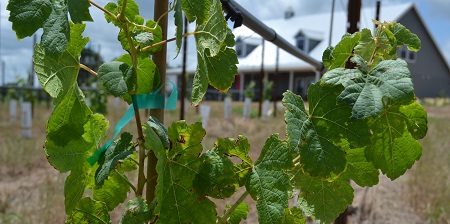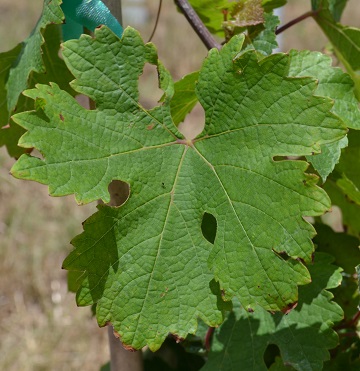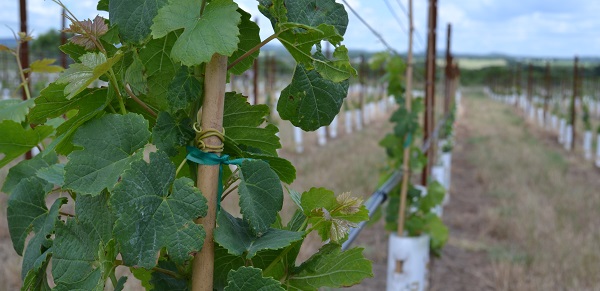Estate Vineyard Block 2: Marsanne
For those of you who’ve recently visited the winery, you may have taken note of the new vineyard and the growing vines. With all the rain, we have a wide range of growth!
Overall at the estate, we have five different vineyard blocks ranging from just under and acre to about 2.3 acres in size. This represents 
Block 2, just north of the winery building and the vineyard section you see when you first drive into the estate, is planted with Marsanne. Marsanne? This grape may be unknown to many folks, but we believe it holds good promise as we continue seeking the best varieties for our climate and soil.
So, what is Marsanne?
Marsanne is a white grape, thought to have originated near the town of Marsanne, France, located in the northern Rhone valley. While the name may not be familiar, white wines from Hermitage, St. Joseph, Crozes-Hermitage and St-Peray are often predominately Marsanne blends. In fact, Marsanne is the most widely planted white grape variety in the northern Rhone. Marsanne is also found in the southern Rhone valley, where it can be found in white Cotes du Rhone wines.
Interestingly enough, Austrailia has the most Marsanne vines in the world, accounting for about 80% of the worldwide total. Marsanne was brought there in the 1860’s and the oldest Marsanne vines in the world are found there dating back to about 1927.
 There isn’t much Marsanne yet growing in Texas. A couple of growers up in the High Plains are growing it, including VJ Reddy and Tyler Oswald. Mike McHenry has a block of Marsanne up near San Saba.
There isn’t much Marsanne yet growing in Texas. A couple of growers up in the High Plains are growing it, including VJ Reddy and Tyler Oswald. Mike McHenry has a block of Marsanne up near San Saba.
Marsanne in the Vineyard
We selected Marsanne for our estate vineyard because of the expected viticulture characteristics. It tends to bud late in the spring, typically about 11 days later than Viognier, which is important when we are dealing with spring frost events. It also tends to have less disease issues, partly due to the looser grape clusters which promotes better air circulation. It also produces wines of great character and structure, something we like when considering blending with our other white grape planted in Block 4 (and sister vine to Marsanne) – Roussanne.
So far at the estate, the vines are growing well in our clay-dominated soil over a limestone base. The rain so far has allowed the vines to grow without supplemental irrigation, a rare treat here in Texas. However, the high rainfall we’ve had this spring is causing its own challenges with standing water and disease pressure. Of course, we won’t get any fruit from these vines this year, though we might get a small sample in 2016. Look for a true harvest in 2017 with wine released perhaps in 2018.

Also, feel free to come on out and walk the vineyards and look at these wonderful vines!